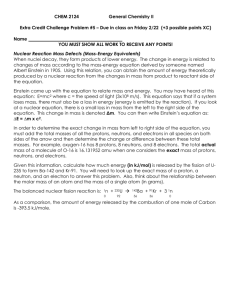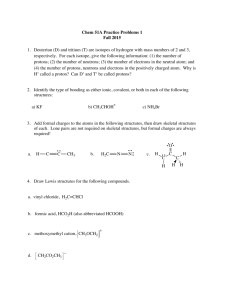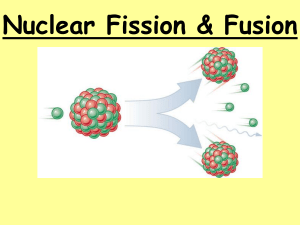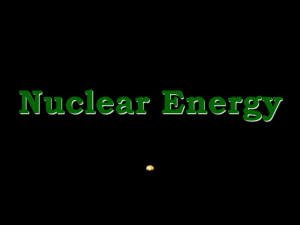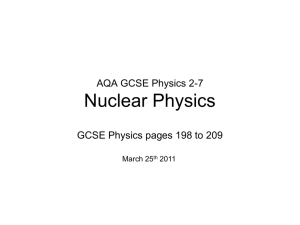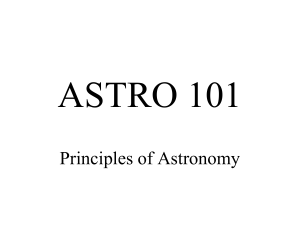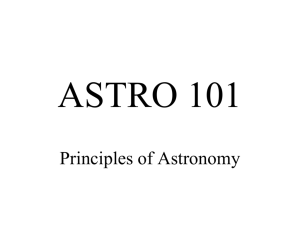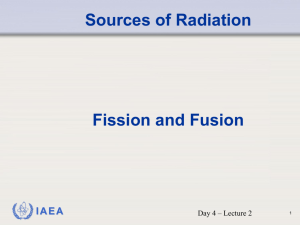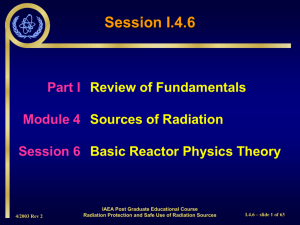Fission and Fusion
advertisement
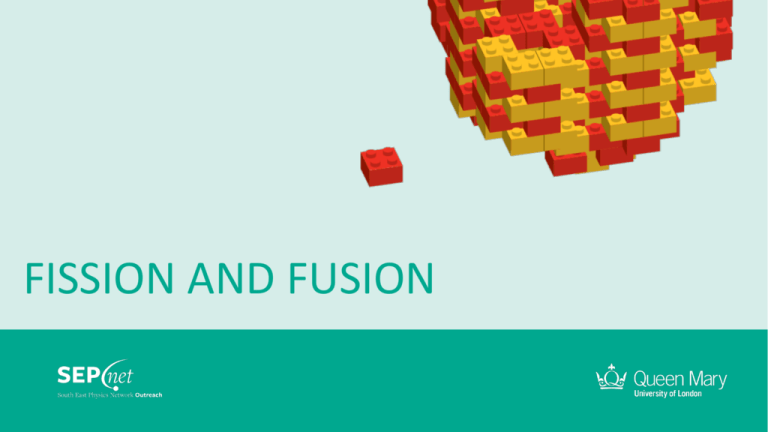
FISSION AND FUSION SESSION INTRODUCTION Nuclear fusion powers the Sun (left) and could be a source of energy in the future (right). Images courtesy of EPA/Corbis/NASA and EFDA-JET. ATOMIC STRUCTURE Helium atom Hydrogen atom If an atom were blown up to the size of Wembley Stadium, its nucleus would only be the size of marble! Images courtesy of Wikipedia ISOTOPES Percentage of all Hydrogen atoms occurring naturally 99.9885% 0.0115% Very Rare RADIOACTIVITY Some combinations of Protons and Neutrons are unstable (right), but can become stable through radioactive decay emitting one of these particles: Alpha Particle (Helium nucleus) Beta Minus Particle (electron) Beta Plus Particle (positron) Gamma Ray (photon) The number of protons and neutrons determines which type of decay happens Image courtesy of Wikipedia NUCLEAR FUSION Fusion occurs in the Sun’s core. The light it produces takes 5,000 years to reach the surface and then a further 8 minutes to get to us. Images courtesy of NASA/SOHO NUCLEAR FISSION 36 protons, 56 neutrons 92 protons, 143 neutrons 92 protons, 144 neutrons 56 protons, 85 neutrons Neutron captured in Uranium-235 nucleus Unstable nucleus breaks apart (fissures) to become stable. This is just one way it can split. CHAIN REACTIONS Nuclear weapons rely on runaway chain reactions. The first atomic bombs used fission chain reactions (like that on the left) whereas in modern atomic weapons energy is released though both fission and fusion. Image courtesy of National Nuclear Security Administration ROUNDUP Atomic nuclei are formed of protons and neutrons Isotopes of an element contain different numbers of neutrons Unstable nuclei undergo radioactive decay (alpha, beta, gamma) Fusion in the Sun combines protons forming Helium + lots of energy Fission splits heavy nuclei into lighter elements This can lead to a chain reaction of nuclear fission


